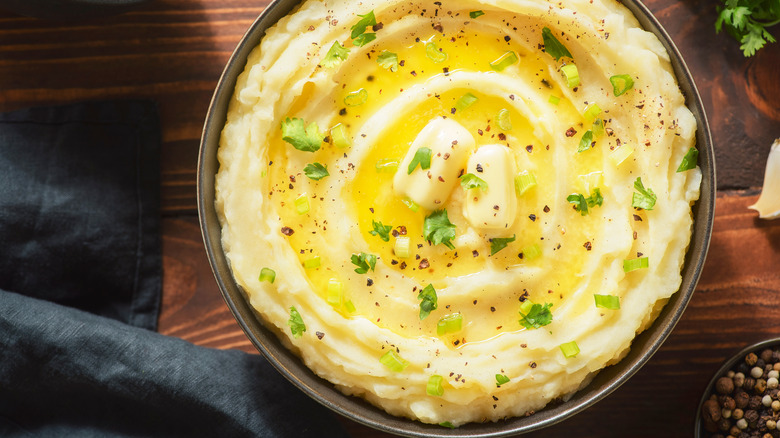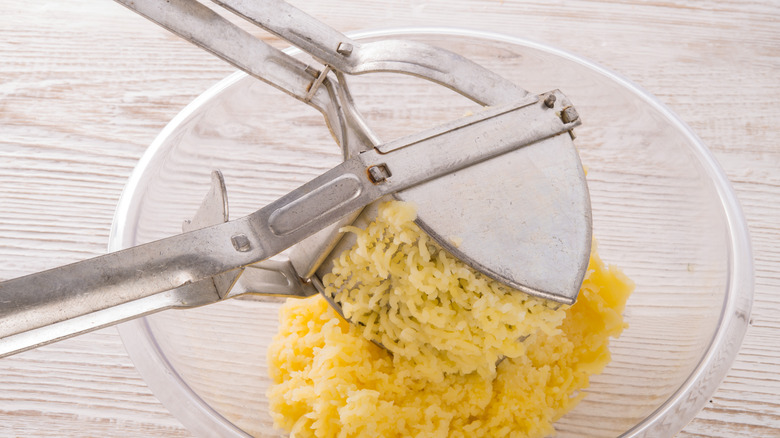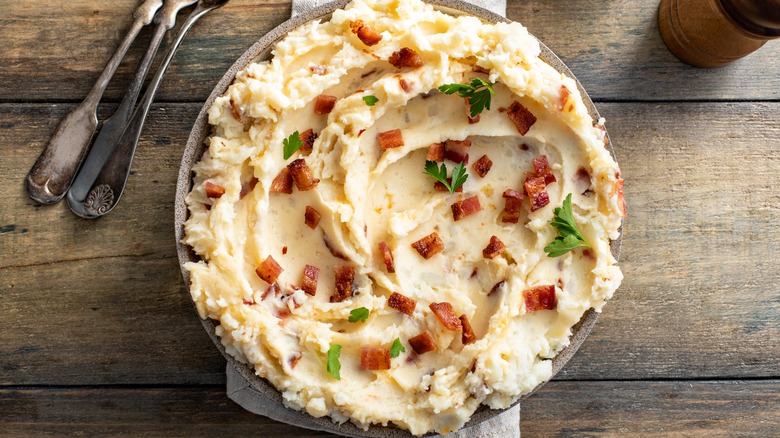The Tool That Produces The Lightest Mashed Potatoes
Mashed potatoes can be the perfect side dish for everything ranging from a simply seared pork chop all the way to a classic prime rib. In some cases, they can also become a meal in themselves.
But they can also create some questions up for debate like which is the best potato, or how should you cook it, or should you cook it with or without the skin? It can become dizzying.
What we can agree on is that the potatoes need to be mashed one way or another. Better Homes & Gardens debate the various tools for mashing, ranging from a food mill to a potato masher. Each has its pros and cons, which can lead to some degree of lumps. While rustic, chunky mashed potatoes hold a soft spot in some of our hearts, most agree that "light" and "fluffy" are better adjectives than "lumpy" for the ultimate mashed potatoes. And there's one tool that can take your mashed potatoes to the next level.
Ricing is the key to light mashed potatoes
A classic potato masher has been improved with more tines, flat tines, and ergonomic handles, but it can still lead to lumps. Standard potato mashers might be better suited for cooking ground meat.
Some high-end restaurants and chefs may run potatoes through a food mill and then push the potatoes through a super fine sieve called a tamis, like the late Michelin-starred chef Joël Robuchon. Robuchon's recipe, per The Guardian, is often duplicated and world-renowned for using this technique while using a massive amount of softened butter.
But one of the best tools to use for mashed potatoes is a ricer. These old-fashioned tools have a perforated basket on the end of a handle. The opposite handle pushes the potato through resulting in small threads of potato that resemble grains of rice. According to America's Test Kitchen, a ricer yields the fluffiest potatoes because they're gentle enough to mash but not so rough to turn them gluey.
How to upgrade your light mashed potatoes
If a ricer seems like an odd addition to your kitchen tool kit, the Farmer's Almanac offers a slew of other ways to put a ricer to use. They suggest using it to make applesauce, hummus, cooked squash, and as a press to squeeze the liquid out of frozen spinach. In short, a ricer is more akin to a low-tech food processor than something you'll only use for mashed potatoes. Even if a ricer only made mashed potatoes, isn't that a worthy enough cause?
But other debates, such as how to make the best-mashed potatoes are another story. Food Network star Tyler Florence recommends boiling the potatoes in milk or cream instead of water. You can also flavor the fat by simmering some aromatics, like thyme or garlic, in butter while the potatoes cook. Then strain the butter before adding it to the mash.
After all of that, the only problem is deciding how many potatoes to mash. But there's no shortage of ideas for what to do with leftover mashed potatoes.


